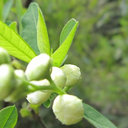Protective effects of yindanxinnaotong capsule in a rat model of myocardial ischemia/reperfusion injury.
Keywords
Abstract
OBJECTIVE
To investigate the effects of Yindanxinnaotong capsule (YDXNTC) and main components compatibility and ratios on myocardium against ischemia/reperfusion injury and the effect's underlying mechanism.
METHODS
Myocardial ischemia/reperfusion injury (MIRI) was induced by ischemia for 30 min and reperfusion for 30 min. Electrocardiogram data and coronary flow were recorded, and superoxide dismutase (SOD), malondialdehyde (MDA), lactate dehydrogenase, creatine kinase-MB, cardiac troponin T and I (cTnT, cTnI) and interleukin-1β, interleukin-8, interleukin-18 (IL-1β, IL-8, IL-18) in myocardium were measured. Hypoxia/reoxygenation and hydrogen peroxide (H2O2) injury were induced by hypoxia for 3 h/reoxygenation for 2 h, and 100 μM H2O2 for 1 h, respectively, in vitro rat myocardial cells (H9c2). Cell viability, SOD, MDA, cTnT and inflammatory factors (IL-1β, IL-8 and IL-18) were determined, and Toll-like receptor 4 (TLR-4) expression was measured by western blotting.
RESULTS
In the isolated heart experiment, elevated heart function, coronary flow and SOD levels, and decreased MDA levels and inflammatory factors were noted in the YDXNTC, main components and main components compatibility groups. Ventricular tachycardia/ventricular fibrillation occurrence decreased in the ginkgo biloba extract (GBE), and GBE and salvia miltiorrhiza ethanol extract compatibility (SM-E, GSEC) groups. Lactic dehydrogenase levels decreased in the YDXNTC and aqueous extract of salvia miltiorrhiza (SM-H) groups. Creatine kinase-MB decreased with GBE, SM-E, SM-H and GSEC treatment, and cTnI and cTnT levels decreased with GSEC. In the in vitro cell study, YDXNTC and main components ratios improved cell viability and SOD levels, and suppressed MDA, cTnT and inflammatory factors. TLR-4 expression was down-regulated.
CONCLUSIONS
YDXNTC and main components compatibility showed protective effects on MIRI in this rat model and in vitro study. Regulating the Toll-like receptor signaling pathway may affect the mechanism.






